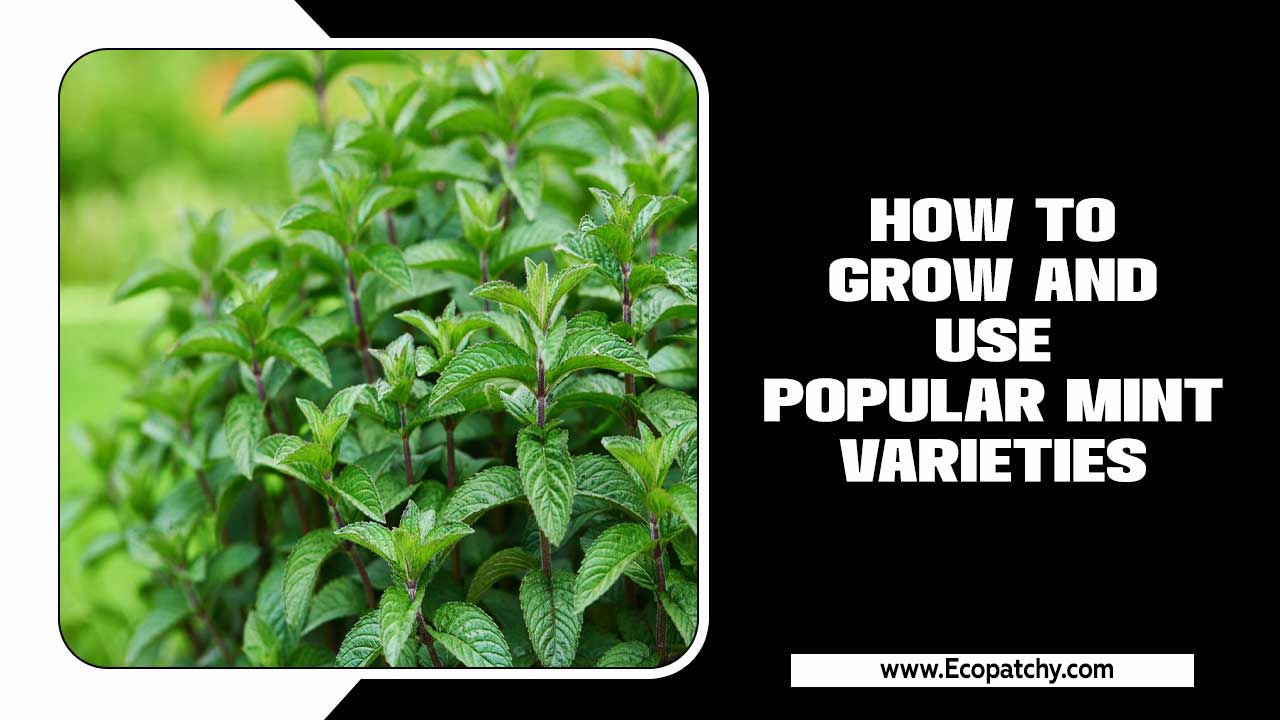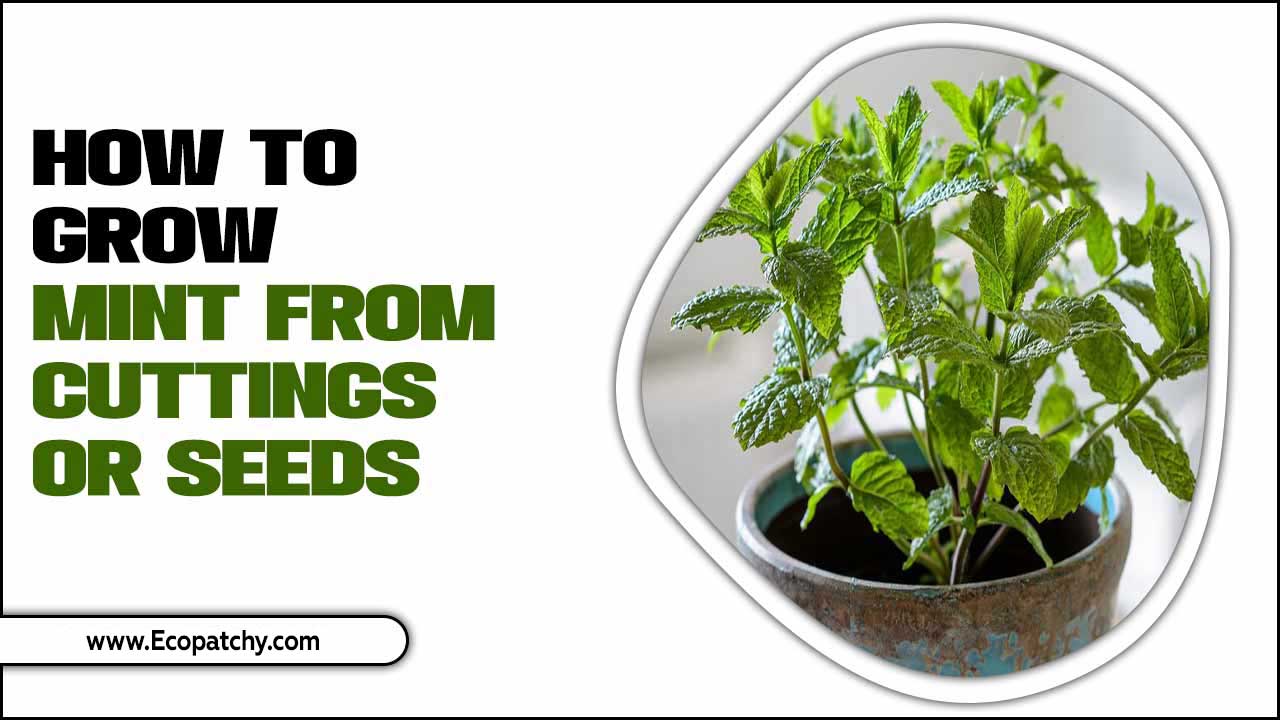Mint is a versatile and beloved herb that is used in a variety of dishes, and drinks, and even for medicinal purposes. Known for its refreshing aroma and cooling taste, mint is a staple in many home gardens and readily available in grocery stores.
However, one of the challenges of growing mint is the delicate nature of the plant, which can easily be damaged during harvesting. Here we will cover everything you need to know about harvesting mint without damaging your plants.
From identifying the ideal time for harvesting to the tools you need and step-by-step guidance on doing it right. We will also talk about the benefits of growing your own mint and how regular harvesting can influence your plant’s health. We will also discuss how to harvest mint without damaging your plants.

About Mint And Its Varieties

Mint, a popular perennial herb, is known for its refreshing aroma and versatility in culinary uses. There are various varieties of mint, such as peppermint, spearmint, and chocolate mint, each with its unique flavor profile. These plants thrive in well-drained soil, partial shade, and regular pruning ensures their health and productivity.
When it comes to harvesting mint, timing is crucial as it influences the flavor and fragrance. Gardeners should wait until September when the mint plants develop buds but haven’t yet flowered. Harvesting the mint leaves just above the second set of leaves yields the best results.
Why Mint Is Essential For Your Herb Garden
Mint, a popular perennial herb, is essential to any herb garden for culinary and medicinal purposes. It provides a fresh supply of aromatic leaves for cooking, baking, and making beverages like mint tea and attracts beneficial insects that naturally control garden pests.
The menthol in mint leaves can relieve indigestion and aid digestion. This hardy and vigorous plant quickly fills out empty spaces in your herb garden, providing lush and attractive foliage. Don’t miss out on mint’s numerous benefits to your herb garden.
The Importance Of Properly Harvesting Mint
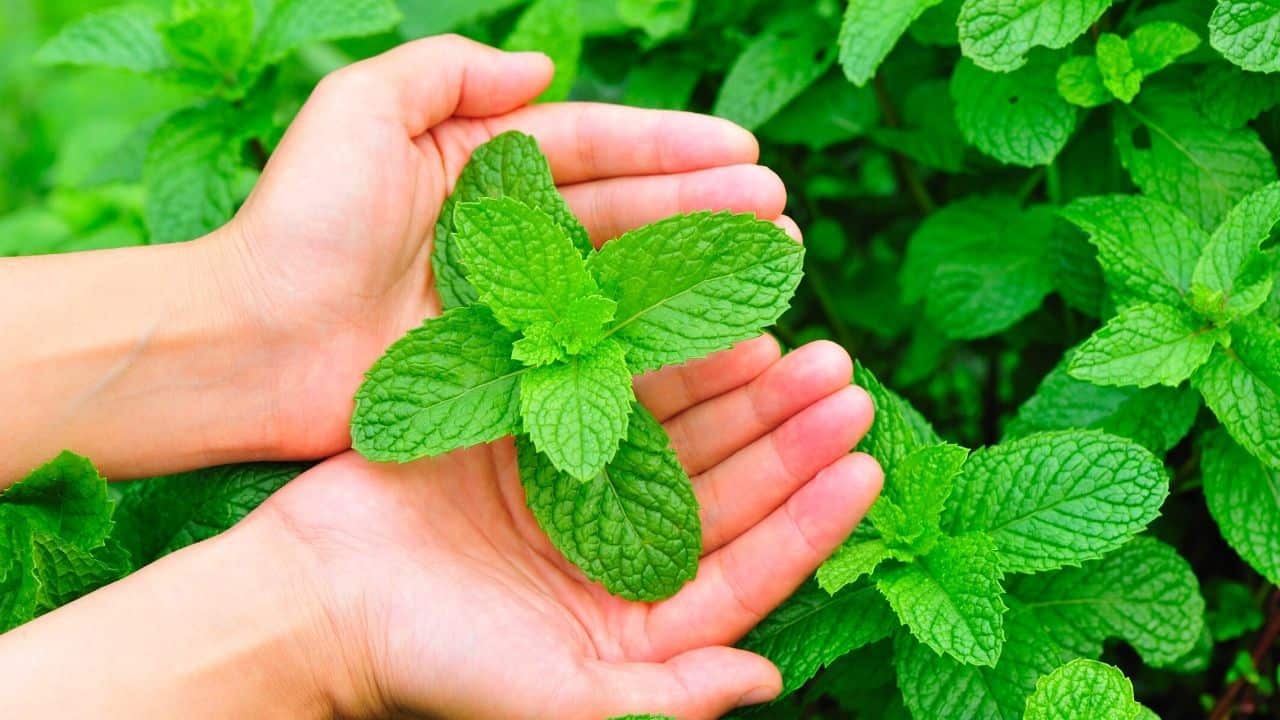
Properly harvesting mint is essential for ensuring optimal flavor and aroma. When harvested incorrectly, the plant can be damaged, hindering future growth. You can promote bushier growth and healthier plants by utilizing proper harvest techniques. Additionally, correct harvesting methods help preserve the plant’s essential oils, responsible for the mint’s distinctive fragrance and taste.
Precise harvesting also plays a key role in preventing disease and pest infestation. By understanding the importance of properly harvesting mint, gardeners can enjoy flavorful leaves for various culinary creations, such as iced tea or mint ice cubes.
How To Harvest Mint Without Damaging Your Plants: Quick Guide
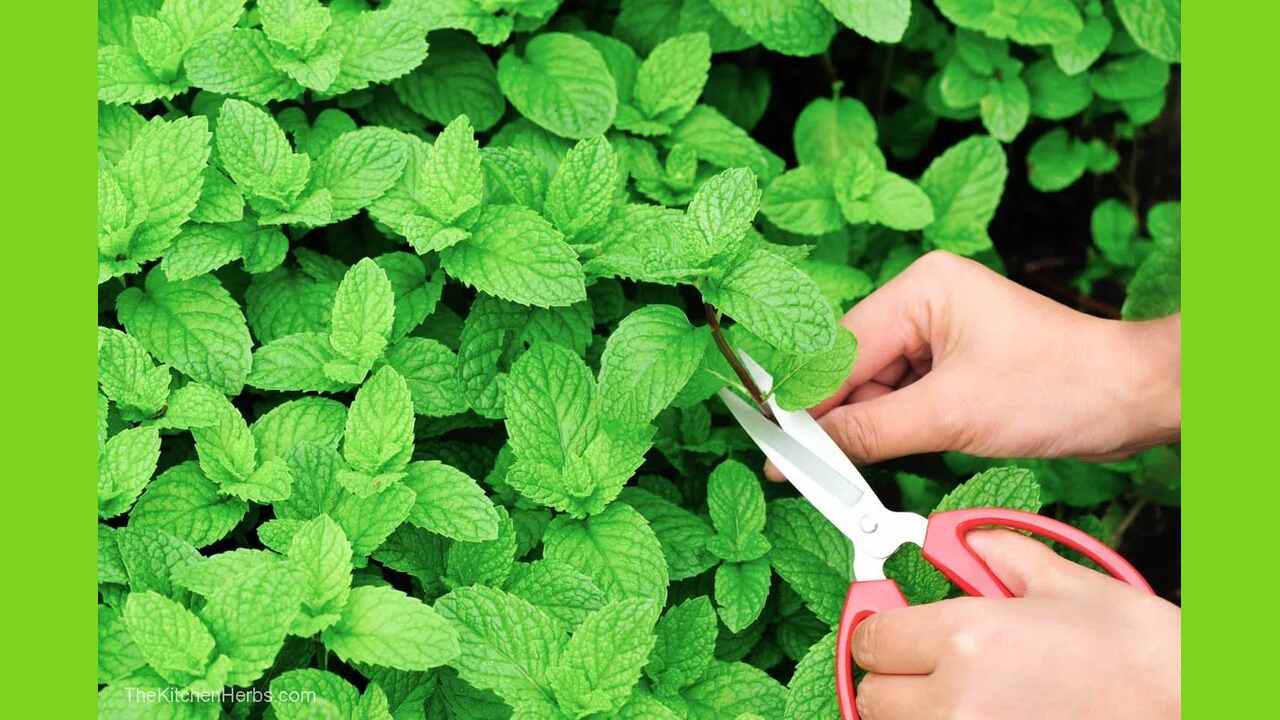
Harvesting mint can be a delicate process, but with the right technique, you can enjoy fresh mint without causing harm to your plants. By following these simple steps, you can enjoy fresh mint while ensuring the health and longevity of your plants. Here’s a quick guide on how to harvest mint without damaging your plants:
- Choose The Right Time: Mint is best harvested in the morning when the essential oils are most concentrated. Avoid harvesting after rain or watering, as this can dilute the flavor.
- Use Sharp Scissors Or Shears: When harvesting mint, it’s important to use clean and sharp tools to make clean cuts. This helps promote healthy growth and prevents damage to the plant.
- Cut Above The Nodes: Look for a pair of healthy leaves and cut about an inch above them. This encourages new growth and prevents the plant from becoming leggy.
- Leave Some Leaves Behind: It’s crucial to leave at least one-third of the plant intact so that it can continue growing. This ensures a continuous supply of fresh mint throughout the growing season.
- Store Properly: After harvesting, gently wash the mint leaves and pat them dry with a paper towel. Store them in an airtight container, wrap them in a damp paper towel, and place them in a plastic bag in the refrigerator for up to a week.
The Benefits Of Growing And Harvesting Your Own Mint
Homegrown mint offers a fresh and flavorful addition to meals and beverages, enhancing their taste and aroma. By growing your own mint, you can eliminate the need for store-bought options that may be treated with pesticides. Harvesting your mint ensures a continuous supply of fresh leaves throughout the growing season, allowing you to enjoy its benefits whenever desired.
Moreover, growing your mint enables you to tailor it to your specific preferences, whether choosing particular varieties or avoiding certain additives. The satisfaction of nurturing and harvesting your own mint enhances the overall culinary experience, making every dish or drink more enjoyable.
Economic Advantages Of Home-Grown Mint
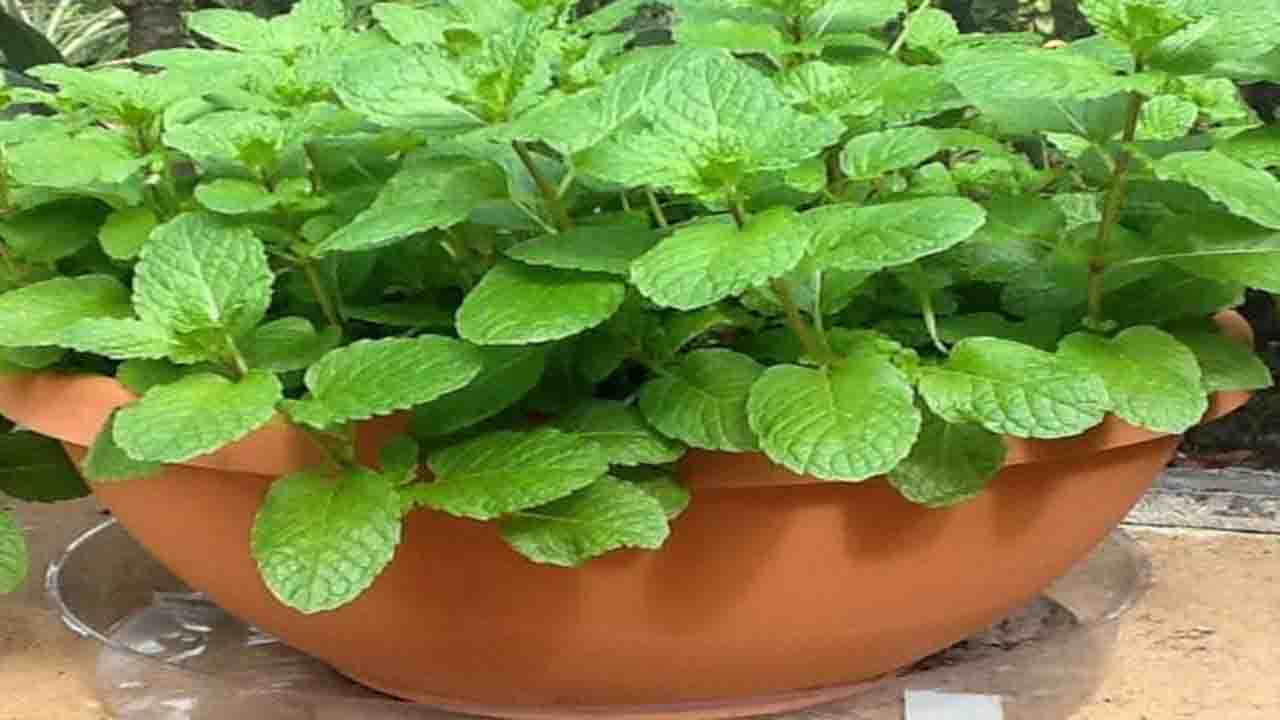
Growing your own mint can have several economic advantages. Firstly, it saves money compared to purchasing store-bought mint. This means you can enjoy the benefits of fresh mint without the cost. Additionally, home-grown mint eliminates the need for frequent trips to the grocery store, reducing transportation costs. By harvesting your own mint, you can also control the quantity needed, avoiding wastage.
Furthermore, growing and harvesting your own mint allows you to experiment with different varieties and flavors without additional expenses. This means you can customize your mint to suit your preferences.
Lastly, utilizing home-grown mint in recipes reduces the need for purchasing other expensive herbs or flavorings. So, growing and harvesting mint is a great way to save money and ensures you have a steady supply of flavorful leaves at your fingertips.
Health And Flavor Benefits Of Fresh Mint
Freshly harvested mint leaves offer an unparalleled flavor compared to dried or store-bought options. The richness of essential oils in fresh mint contributes to its distinctive aroma and taste. Incorporating fresh mint into meals and beverages adds a refreshing and invigorating flavor profile and offers potential digestive benefits, alleviating symptoms like indigestion.
Moreover, the vibrant green color and lively aroma of freshly harvested mint enhance the visual and sensory appeal of dishes. So, by growing your own mint, you can enjoy flavorful leaves that elevate your culinary creations to new heights.
Identifying The Ideal Time To Harvest Mint
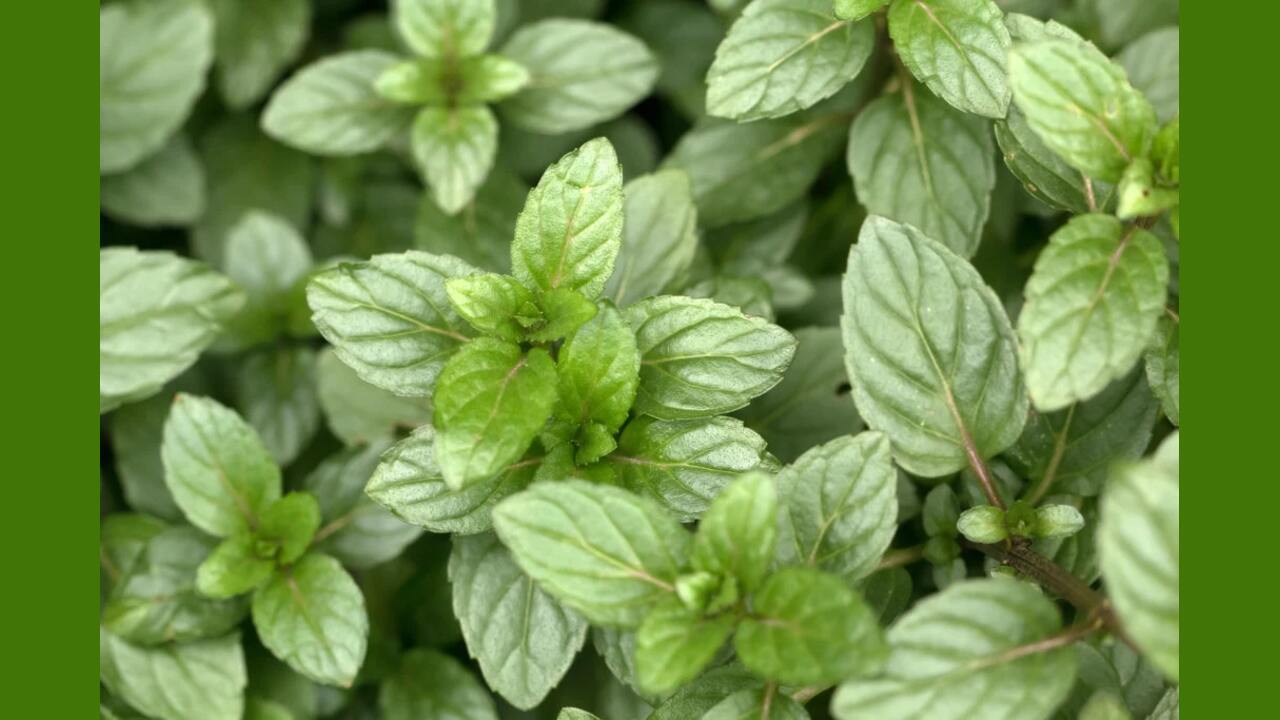
When identifying the ideal time to harvest mint, there are a few important factors to consider. First and foremost, it’s best to harvest mint during the early morning hours when the essential oils are most concentrated. Additionally, you’ll want to wait until the plant reaches a height of 6-8 inches for optimal flavor and aroma.
Choosing a dry day to harvest is also crucial, as dampness can affect the quality and shelf life of the leaves. It’s recommended to harvest mint before it flowers to ensure the leaves have the highest concentration of essential oils. To determine the right time, regularly inspect your mint plant for signs of new growth and vibrant foliage. These indicators will help you know when to harvest for the best results.
Tools You Need For Harvesting Mint
When harvesting mint without damaging your plants, having the right tools is essential. Sharp pruning shears or scissors are recommended for clean cuts that minimize harm to the mint plant. Using a clean and sharp tool ensures a hygienic harvest and prevents the spread of diseases or pests.
Having a clean container on hand to collect the harvested mint leaves is important, making transportation and storage easier. Additionally, wearing gloves can protect your hands from potential irritants while handling the mint plant. If you’re harvesting mint outdoors, consider wearing a gardening hat and applying sunscreen for added protection from the sun.
Step-By-Step Guide To Harvest Mint
Harvesting mint is a simple process that can be done without causing damage to your plants. By following these steps, you can enjoy fresh mint while allowing your plants to thrive throughout the growing season. Here is a step-by-step guide to help you successfully harvest your mint:
- Choose The Right Time: Mint is best harvested in the morning when the essential oils peak.
- Select Mature Leaves: Look for fully developed leaves with a vibrant green color.
- Use Sharp Scissors Or Shears: To avoid damaging the plant, use clean and sharp scissors or shears to cut the stems just above a leaf node.
- Remove Damaged Or Yellow Leaves: As you harvest, remove any damaged or yellow leaves to promote healthy growth.
- Harvest From Different Parts Of The Plant: Instead of harvesting from one area, try to distribute your cuts across different plant parts to encourage even growth.
- Leave Some Foliage Behind: Always leave at least one-third of the plant intact to ensure its continued health and growth.
Preserving Your Mint Harvest For Long-Term Use
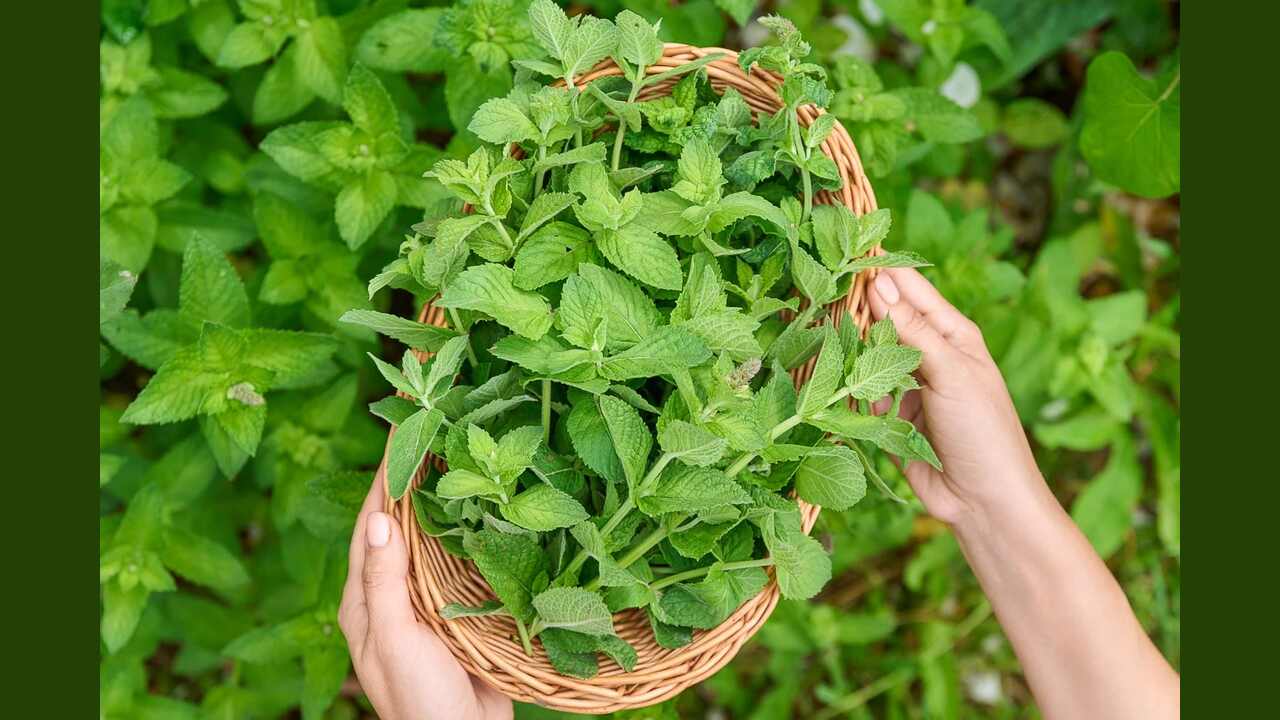
Preserving your mint harvest is essential for long-term use and to extend the shelf life of this fragrant herb. One effective method is drying mint leaves. Simply place the leaves on a baking sheet and dry them in the oven at a low temperature.
Once dried, store them in an airtight container away from moisture and direct sunlight. Another option is freezing mint leaves in ice cube trays with water or oil, which preserves their flavor for later use. Consider using dried mint leaves to make homemade mint tea or incorporating them into various recipes.
How To Dry Mint For Long-Term Storage
To preserve your mint harvest for long-term use, you can try a few methods. One option is to harvest mint stems, tie them together, and hang them upside down in a dark, well-ventilated area. This allows the mint leaves to dry naturally over time.
Alternatively, you can place the mint leaves on a paper towel and microwave them in short bursts until they are dry. Once the mint leaves are completely dried, spread them on a baking sheet to cool before transferring them to an airtight container. Don’t forget to label and date the container for easy identification. Store the dried mint in a cool, dry pantry or cupboard away from moisture and direct sunlight for the best flavor.
How Does Regular Harvesting Influence The Health Of Your Mint Plant?
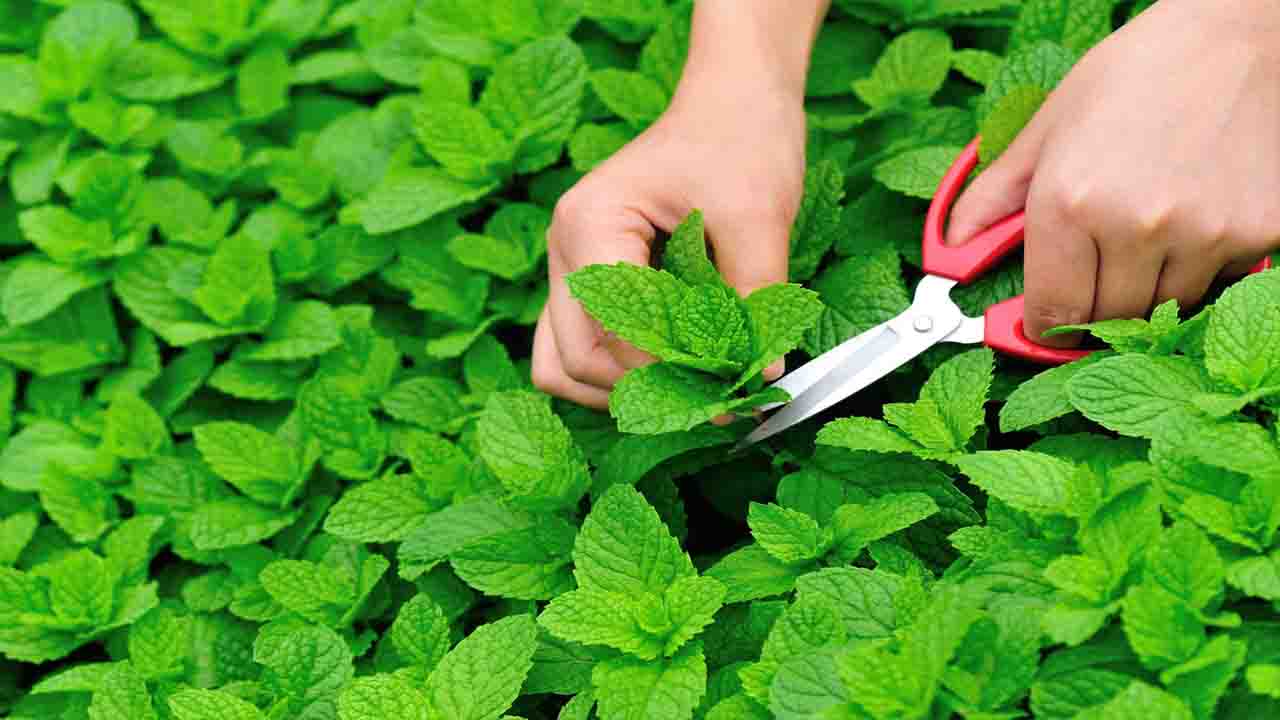
Regular harvesting can benefit the health of your mint plant. When you harvest mint leaves, it encourages new growth and helps to prevent the plant from becoming overgrown or leggy. Regular harvesting also prevents the plant from flowering, which can cause the flavor of the leaves to become bitter.
To harvest mint without damaging your plants, simply snip off the leaves at their base using scissors or pruning shears. Be sure to leave some leaves on the plant so that it can continue to grow and thrive. With proper care and regular harvesting, your mint plants will continue flourishing and provide fresh, flavorful leaves for all your culinary needs.
Conclusion
Properly harvesting mint is essential for the health and longevity of your plants. Following a few simple steps, you can ensure you harvest your mint without causing damage. Remember to choose the ideal time for harvesting, use the right tools, and follow a step-by-step guide.
Harvesting your own mint has numerous benefits, including economic advantages, as you no longer need to buy store-bought mint. Additionally, fresh mint offers health benefits and enhances the flavor of your culinary creations. Lastly, regular harvesting promotes the overall health of your mint plant, encouraging growth and a bountiful harvest. We’ve discussed how to harvest mint without damaging your plants.
Frequently Asked Questions
1.What Is The Best Way To Harvest Mint?
Ans: The ideal way to harvest mint is in the morning after the dew has dried. To promote bushier growth, pinch off the top third of the stem just above a set of leaves. Avoid cutting all the way down to the base to prevent damage. For storage, keep freshly harvested mint in a damp paper towel in the refrigerator for up to a week.
2.Does Mint Grow Back After Harvesting?
Ans: Yes, mint will regrow after harvesting. This hardy herb can tolerate being cut down to the ground. Harvesting only up to one-third of the plant at a time is recommended to ensure proper regrowth. Regular harvesting can stimulate growth, making your mint plants bushier and more productive.
3.How Do You Cut Mint Leaves Off A Plant?
Ans: Use clean gardening scissors or shears to cut mint leaves off a plant. Trim the stem just above where two leaves meet, leaving some foliage for regrowth. Avoid over-harvesting by cutting no more than one-third of the plant at once. Regular pruning encourages new growth and a bushier appearance.
4.What Is The Best Way To Pick Mint Leaves?
Ans: To pick mint leaves, gently hold the stem and use your fingers or scissors to pluck them off. If you want new growth, cut the stem just above a set of leaves. Avoid damaging the plant by not pulling too hard or picking all the leaves from one stem.
5.When Is The Best Time To Harvest Mint Leaves?
Ans: The ideal time to harvest mint leaves is in the morning after the dew has dried and before the sun gets too hot. Harvest the leaves just before the plant starts to flower for maximum flavor. To ensure continuous growth, only harvest up to one-third of the plant.

